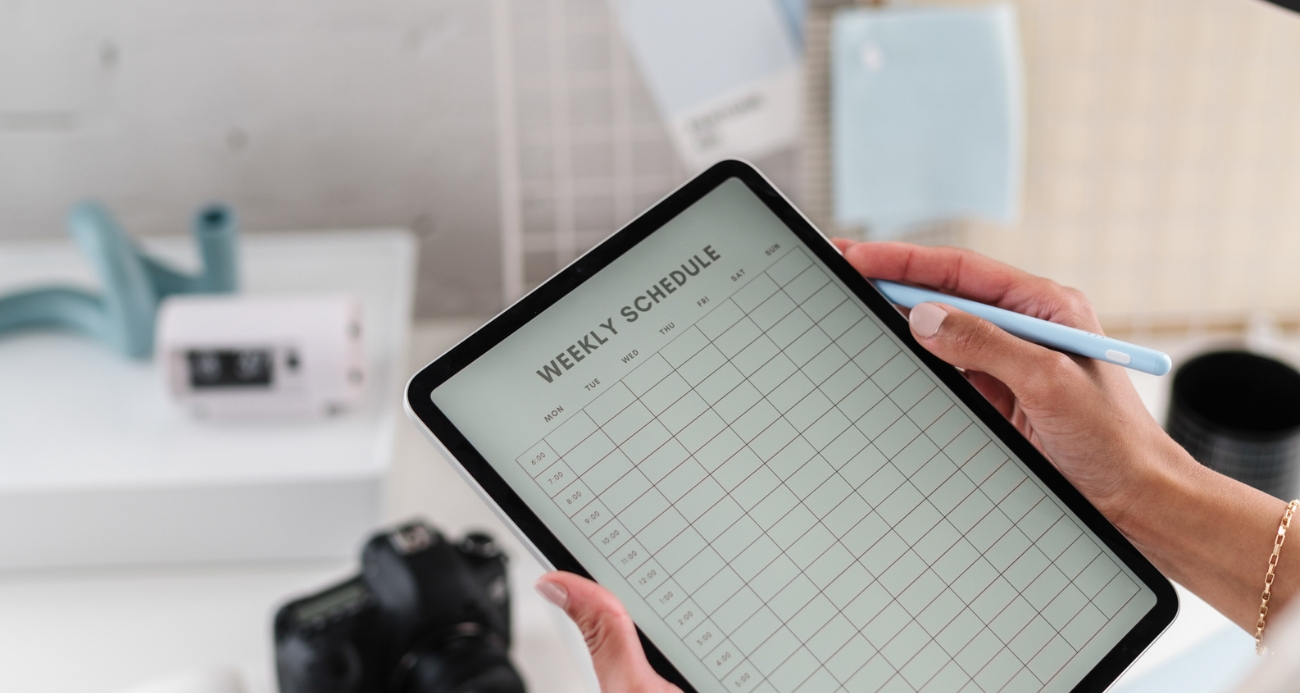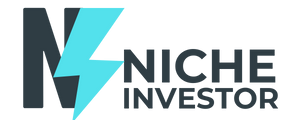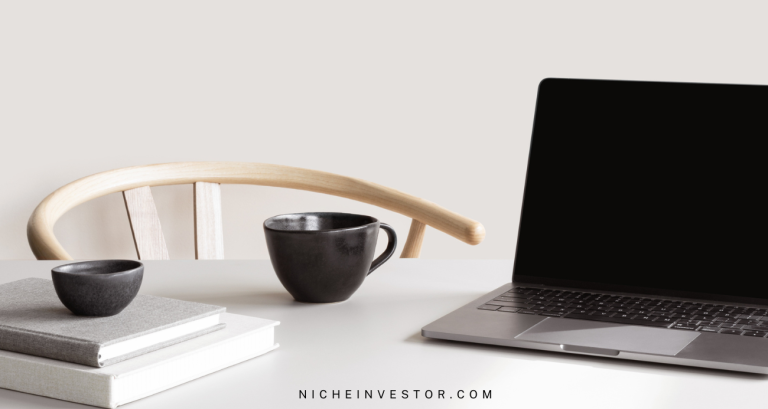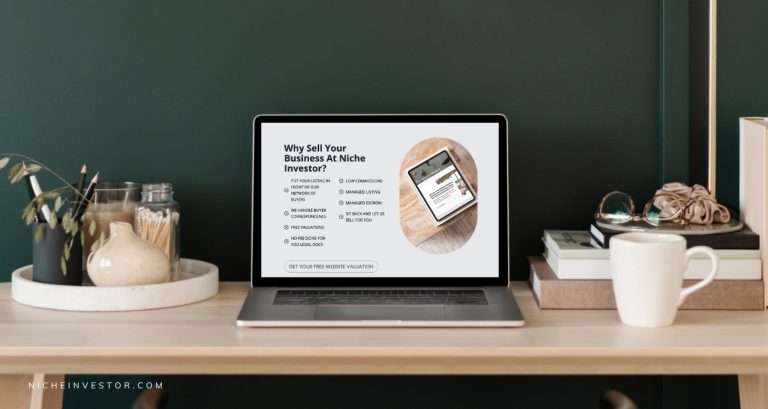15 Things Your Website Needs To Make Money

How many of these ’15 things your website needs to make money’ do you have in place?
Owning a website isn’t just about having an online presence; it’s about strategically leveraging that presence for financial gain.
Whether you’re in the business of acquiring, developing, and flipping websites for profit, or a content creator looking to add valuable assets to your portfolio, this article is for you.
I’ll share some essential elements your website needs to not just survive, but thrive financially.
As an affiliate partner of various brands and sponsored content, we may earn commission on qualifying purchases. Disclaimer | Advertise With Us
From user engagement to monetization strategies, we’ll explore the key components that can turn a regular website into a lucrative investment.
Most people think of bloggers only as writers but actually, that is only a tiny, tiny part of what we do.
We are marketers, advertisers, salespeople, content creators, entertainers, educators, website designers, graphic designers, the list goes on…
Honestly, if you don’t care about growing your blog and making an income then this post probably isn’t for you.
But if you do ever want to make money and cultivate an awesome tribe of people who are obsessed with what you say then you’re going to want to carry on reading.
Be sure to download this Blogging Toolkit. It’s a functional resource bundle for you to use, and it’s FREE!
Yes, there is a lot to learn. But don’t worry, because I’ve created this awesome checklist of 15 things you must do with every blog post.
You can run through this checklist each time you’re about to publish a new post.
Some of the below actions will directly help you make more money with your website post-acquisition if you just bought it, or increase its value if you are planning to sell it.
Others will improve traffic and some will increase your authority, meaning your readers are more likely to click on that affiliate link or buy your product.
It’s the combination of all the different actions that are so important, so don’t miss any out!
15 Things Your Website Needs To Make Money
1) Make Your Article Titles Super Clickable
It’s number one because it’s so important!
If your post titles (or headlines) don’t sound super enticing then no one will be clicking on them, so make sure they’re irresistible.
You can use CoSchedule’s free Headline Analyzer to see if your titles are up to scratch.
2) Avoid Walls Of Text
Okay, this is more of a don’t do, but you must make sure your blog post isn’t just a wall of text.
Websites are meant to be fun and easy to read so include plenty of subheadings, bullet points, lists, bolded text and new paragraphs to break everything up.
3) Interlink to other articles on your site
Interlinking is so important for bounce rate and ensuring your readers know you have loads of authority on subjects relating to what they are currently reading.
You need to link to other posts within your writing! This is the plugin I recommend for this task.
4) Include External Links
I always like to include a couple of external links to good sites*. This shows that I’ve read around the subject I’m writing about and provides a better user experience for my readers because they can continue their research easily!
*By good sites, I mean non-spammy authoritative sites, don’t associate you and your blog with anything you wouldn’t trust either!
5) Ensure All Links Open Into A New Tab
Even if the links are internal!
Why? Well, think about when you are browsing and reading blog posts.
If you click on an external link, perhaps to check out a product, you often still want to read the rest of the post you were reading or compare what the person was saying to what you are seeing of the product.
Makes sense right? But why would you want to make internal links open in a new tab as well?
You’re reading an awesome blog post but then you notice a link to some content that you just can’t resist.
Once you click on that you normally lose what you were just reading and probably forget to go back to it.
However, if the link opens in a new tab then you can read both articles without missing out.
Plus you will probably end up clicking even more links either from further down the page on the original article or some links on the other post you opened!
Either way, it all equals more pagviews!
6) Optimize Your Website With Proper SEO
Basic SEO is super easy and can pay dividends down the line, so it’s seriously worth doing!
First up you want to choose a keyword (aka key phrase) that’s around 3-5 words long that your post is about.
Then you want to try and include this keyword in:
- the title (which should be your H1)
- in your metadata (which you can alter with the Rank Math SEO plugin)
- alt tags (more on this later)
- article URL (also more on this later)
- in your H2 headings
- and a couple of times in the body of your text
Also make sure you write keyword-related phrases within your blog post, like if your keyword was ‘decluttering your home’ you would also want to write things like ‘tidy your home’ and organizing your house’.
But realistically if you are writing well then you should do this naturally.
7) Make Your Article URLs Short and Clean
Try and make your blog post URL your target keyword, this will really help it rank in Google.
So if you’re writing a post on ‘decluttering your home’ and that’s your target keyword use that as your URL, not your entire blog post title. As www.yourblog.com/declutter-your-home is better than www.yourblog.com/29-steps-to-decluttering-your-home-and-getting-tidy-in-the-new-year…
8) Include 2-6 Images Optimized For Pinterest
A Pinterest-optimized image is:
- a vertical (1000px by 1500px or longer) image
- the title is large and clear
- and there is an eye-catching photo with plenty of white space
We recommend two to six pins in every post so that your readers have multiple opportunities to share the article on Pinterest.
Just make sure the images are different and have a slightly different title and description.
If you don’t want to display multiple images within your blog post then you can hide the additional Pinterest images within your blog’s code.
9) Fill In The ‘alt Text’ Or ‘image Alternative Text’ For All Images
On the majority of themes in WordPress, the alt text will be pulled through as your description on your pin in Pinterest.
Therefore make sure that is filled in with an awesome description chock full of keywords including your target SEO keyword.
10) Include One Facebook-optimized Image
Facebook will pull your article’s featured image, and it has a completely different image specification in comparison to Pinterest. For your featured image to look good on Facebook you want a horizontal image.
I use 1200px by 630px for featured images.
Click on the dot line thing the red arrow is pointing towards below.
11) Include Social Share Buttons On Every Post
I like the pro version of Social Warfare.
Ensure you have social sharing enabled above and below your posts, and include floating share options. That way there is always a sharing option available to people on your site.
12) Focus on User Experience (UX) and Engagement
In the digital landscape, the user experience is king.
A website that offers an intuitive, engaging, and user-friendly experience is more likely to retain visitors, encourage repeat traffic, and, crucially, convert this traffic into revenue.
Here’s why focusing on UX is vital:
First Impressions Matter: Users form an opinion about your site within seconds. A positive UX can make the difference between a one-time visitor and a loyal user.
Improved Search Engine Rankings: Search engines, like Google, prioritize websites that offer a great user experience, especially those that are mobile-friendly and have fast loading times.
Better rankings lead to more organic traffic and, in turn, more monetization opportunities.
Higher Conversion Rates: A website that is easy to navigate and interact with is more likely to convert visitors into customers, subscribers, or followers, directly impacting your revenue.
Brand Perception and Trust: A professionally designed, user-centric website enhances brand credibility and trust. Users are more likely to engage with and spend money on sites that appear trustworthy and secure.
Feedback Loop for Improvement: Paying attention to UX also means continuously gathering and analyzing user feedback. This ongoing process helps in making informed improvements, keeping the website aligned with user needs and preferences.
13) Always Include Affiliate Links Where Appropriate
Many website owners hesitate to incorporate affiliate links into their posts, waiting until they reach a specific threshold of pageviews or subscribers.
But it’s important to shift away from this mindset, as delaying the inclusion of affiliate links can mean missing out on potential income.
tart integrating these links early on; it’s a proactive step towards monetizing your blog, regardless of its current audience size.
I aim to include at least one affiliate link in each post. Realistically that isn’t always possible and it’s important not to include a link to something that has nothing to do with the post.
In those cases, I ensure I have linked to blog posts that are optimized with affiliate links.
Also, always make sure you disclose that the post contains affiliate links!
14) Ensure You Have Multiple Places For Readers To Subscribe With Email Opt-in Freebies
I’m sure you’re already sick of hearing this but YOU MUST BUILD YOUR EMAIL LIST.
You should have multiple places on each post where people can subscribe and you must also have opt-in freebies to entice people to sign up!
There are so many blogs nowadays that you have to give people a reason to hand over their email addresses.
You can click the button below to sign up for a free printable checklist so you don’t forget any of the steps in this post!!!
15) Always End With A Call To Action
This could be as simple as asking a question that readers can answer in the comments.
Or it could be encouraging them to follow you on social media or download your awesome freebie. Just make sure that once someone reaches the end of your post they know exactly what they should do next.
15 Things Your Website Needs To Make Money – Conclusion
In wrapping up “Things Your Website Needs To Make Money,” it’s clear that successful website monetization is a multifaceted endeavor.
For website investors and content creators, the journey involves more than just acquiring the right digital property; it involves nurturing and optimizing it to its fullest potential.
We’ve covered the essential elements that your website should possess, from seamless user experience to diversified revenue streams.
Implementing these strategies will not only increase the profitability of your current websites but also guide you in making informed decisions for future acquisitions.
As you continue to navigate the digital landscape, remember that each website is a unique venture with its own set of challenges and opportunities.
By applying these insights, you stand to create not just a profitable website, but a lasting digital asset in your investment portfolio.
Enroll In The Blog Monetization Course
If you are ready to make more sales with your website, then you need to watch this trainig!







Love this post! Such useful tips! Thanks for sharing!
I’m so pleased you found it helpful!!! 🙂
Love this blog post checklist…!
This post was awesome, thank you!
I’m so pleased you like it! If you have ad blockers on it may not show, but otherwise it’s showing okay on this end! 🙂
Very informative especially the list if 15 things your blog post needs.
Thank you for sharing!
No problem at all! 🙂 I’m glad you liked it!
Hello! This is great, I love your blog! How do you ensure links to open a new tab? This is what I am struggling with at the moment. If you have any suggestions I am all ears and eyes. Thank you!
Hi! When you edit any link in the WordPress editor, select ‘open in new tab’
Hey, loving your blog! These were really useful tips. Thank you 🙂
Thank you so much! I’m glad you enjoyed them.
How can I set up an email list?
Hi Kristen!
To set up an email list you need to create an account with a email marketing provider.
Then you need to insert email sign up boxes on your website. Ideally you should offer a free email opt-in (like a PDF) to encourage readers to hand over their email address.
That really is the bare bones of setting up an email list. If you need more information then Pinterest is great, just have a search there and there will be loads of articles on there that can guide you! 🙂
Any more questions please fire away!
I’m already doing most of these, but there are some that I never would have thought of (using Yoast for Facebook optimized pictures? Who knew!).
Thanks for the ideas and wonderful write up!
Quite a few of them are basic but necessary, you’re right! Rank Math is great though.
No problem glad it helped!